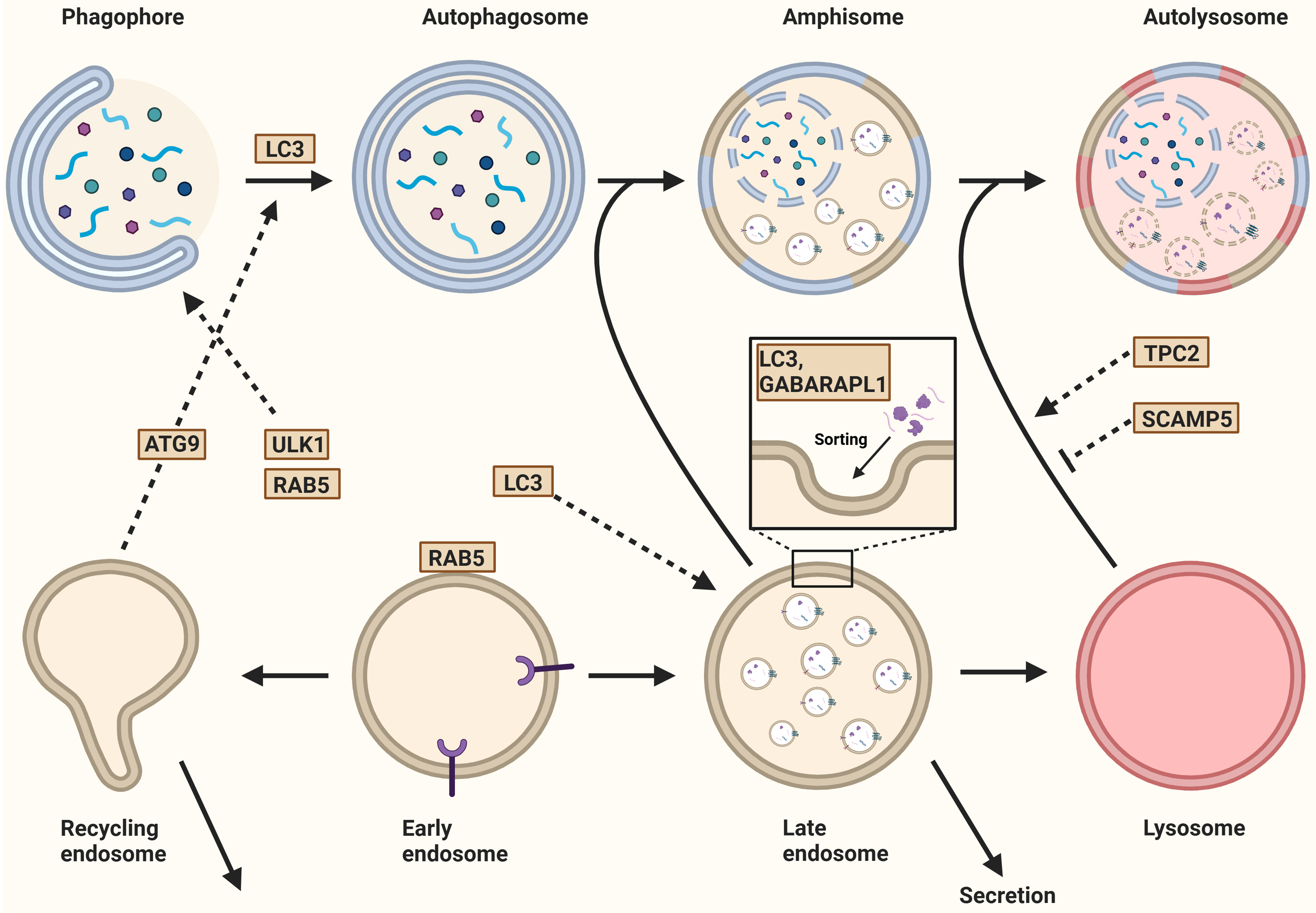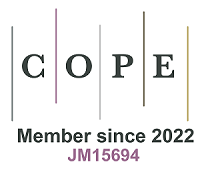fig7
Figure 7. Autophagy and the biogenesis of extracellular vesicles. After the initiation of autophagy, ULK1 interacts with the endosomal protein RAB5, leading to nucleation. The recycling endosome contributes to this process by trafficking the ATG9 from the recycling endosome to the autophagosome. Additionally, LC3 is recruited to the expanding phagophore for membrane expansion and autophagosome formation. In eukaryotes, ATG8 has evolved into the LC3/GABARAP protein family, which includes six members such as LC3B and GABARAPL1. These proteins regulate both cargo loading and the secretion of extracellular vesicles. Once formed, the autophagosome either fuses with a MVB to generate an amphisome or with a lysosome to form an autolysosome. The fusion between the autophagosome and lysosome is regulated by TPC2, a lysosomal non-selective sodium/calcium channel. Similarly, SCAMP5 inhibits this fusion, thereby regulating cargo segregation. Finally, the fusion of late or recycling endosomes with the plasma membrane results in the secretion of their contents. Created in BioRender. Ju, J. (2025) https://BioRender.com/vnlxtuy. ULK1: Unc-51-like autophagy activating kinase 1; ATG9: autophagy-related gene 9; LC3: microtubule-associated protein 1 light chain 3; GABARAPL1: gamma-aminobutyric acid receptor-associated protein-like 1; MVB: multivesicular body; TPC2: two-pore channel 2; SCAMP5: secretory carrier-associated membrane protein 5.











